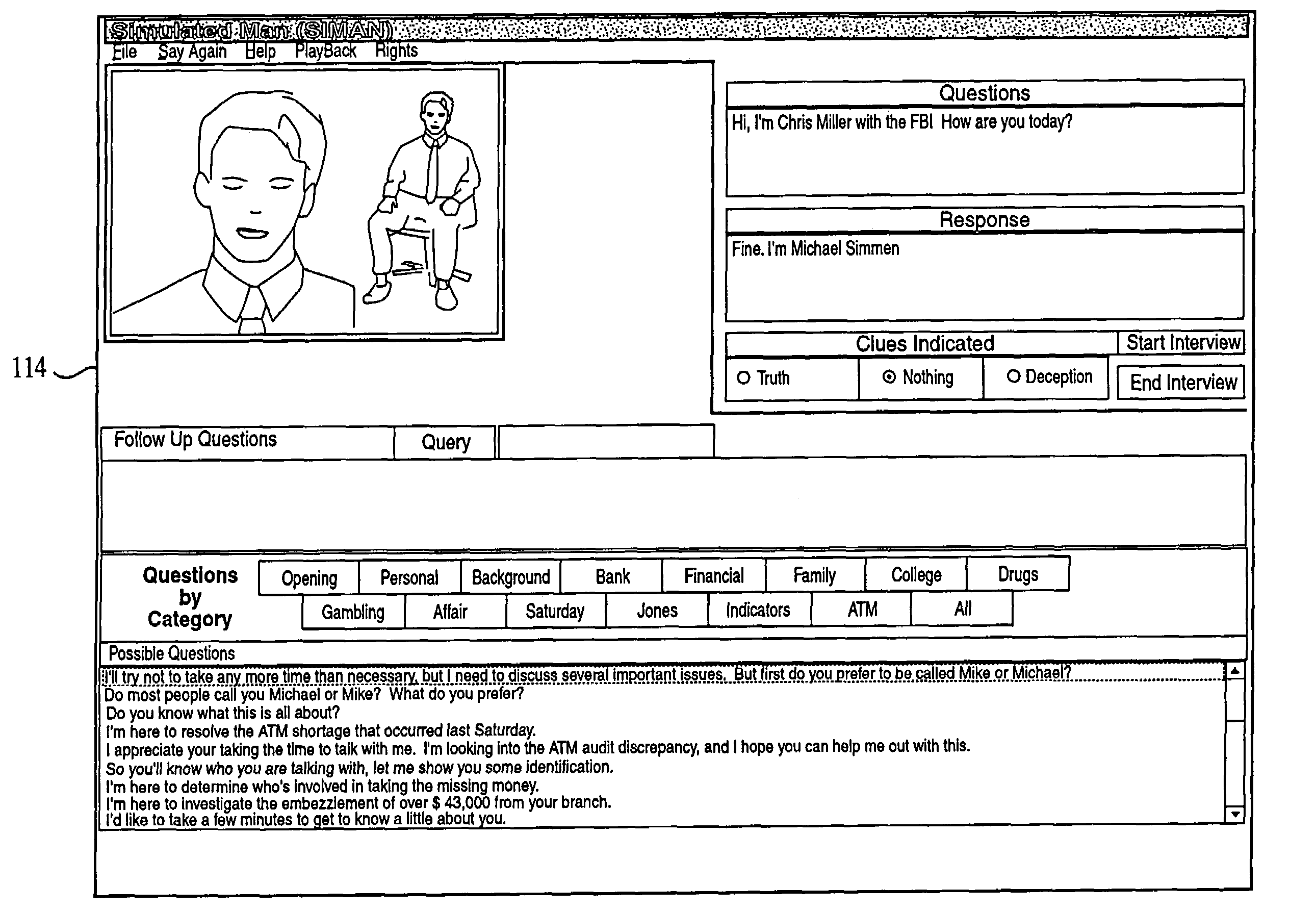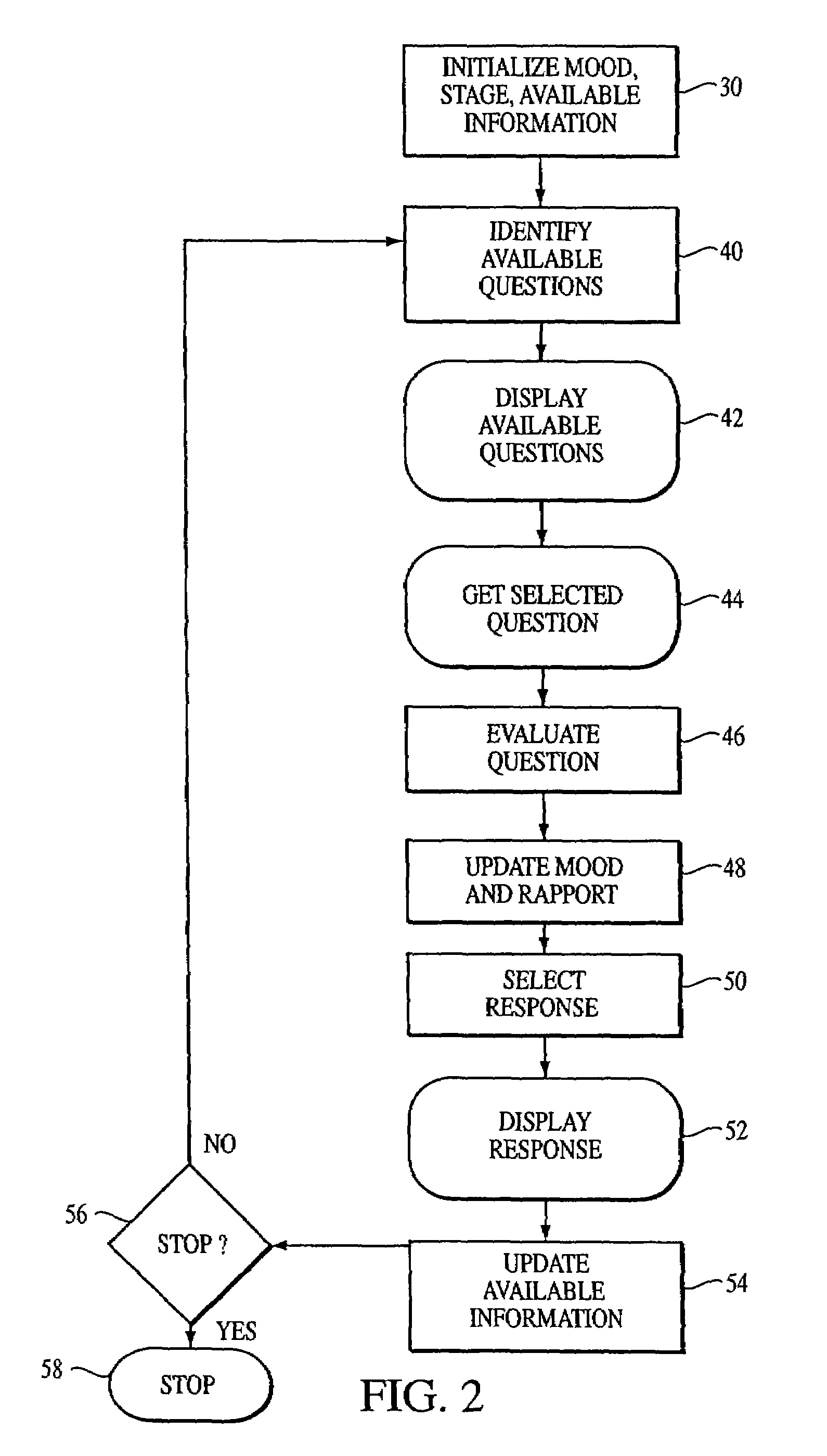Apparatus and method for training using a human interaction simulator
a human interaction and simulator technology, applied in educational models, visual presentations, instruments, etc., can solve problems such as difficulty in acquiring the skills required to detect deception based on verbal and nonverbal clues
- Summary
- Abstract
- Description
- Claims
- Application Information
AI Technical Summary
Benefits of technology
Problems solved by technology
Method used
Image
Examples
Embodiment Construction
[0002]This invention was made with Government support under Contract No. J-FBI-97-004 awarded by the Department of Justice. The Government has certain rights in the invention.
BACKGROUND OF THE INVENTION
[0003]1. Field of the Invention
[0004]This invention relates to a training process for perfecting interview techniques and other interpersonal skills using a computer simulated person and a PC-based or other type computer, training tool that emulates human behavior using the computer-simulated person in a realistic scenario.
[0005]2. Discussion of the Related Art
[0006]For years, law enforcement agents have used verbal and nonverbal clues to detect deception. Much of the original research showing the validity of the technique was done by Reid and Associates. It is most readily available as part of course work provided by their company which includes a course oriented text titled, “The Reid Technique of Interviewing and Interrogation”, John E. Reid and Associates, Chicago, 1991. In additi...
PUM
 Login to View More
Login to View More Abstract
Description
Claims
Application Information
 Login to View More
Login to View More - R&D
- Intellectual Property
- Life Sciences
- Materials
- Tech Scout
- Unparalleled Data Quality
- Higher Quality Content
- 60% Fewer Hallucinations
Browse by: Latest US Patents, China's latest patents, Technical Efficacy Thesaurus, Application Domain, Technology Topic, Popular Technical Reports.
© 2025 PatSnap. All rights reserved.Legal|Privacy policy|Modern Slavery Act Transparency Statement|Sitemap|About US| Contact US: help@patsnap.com



